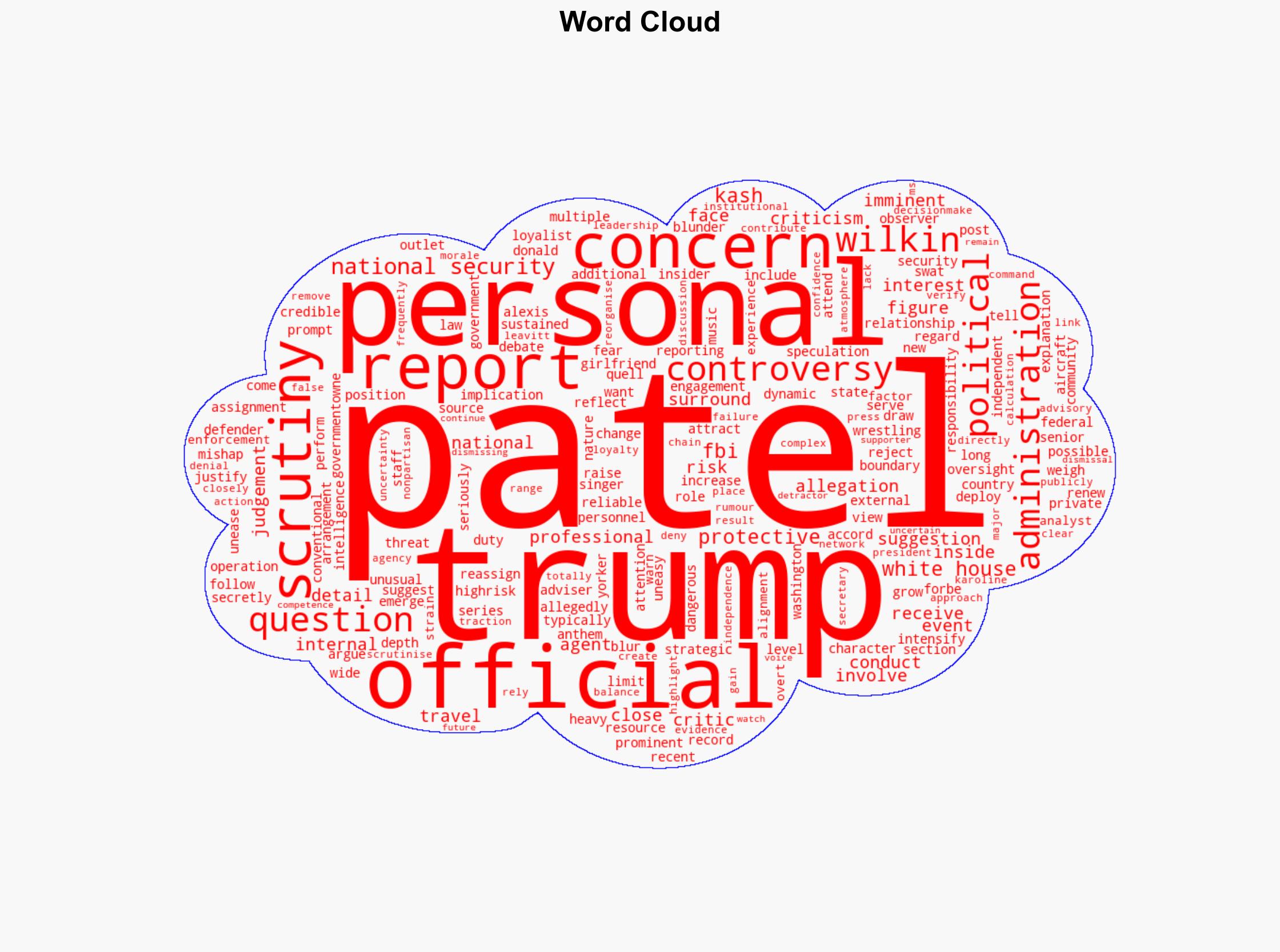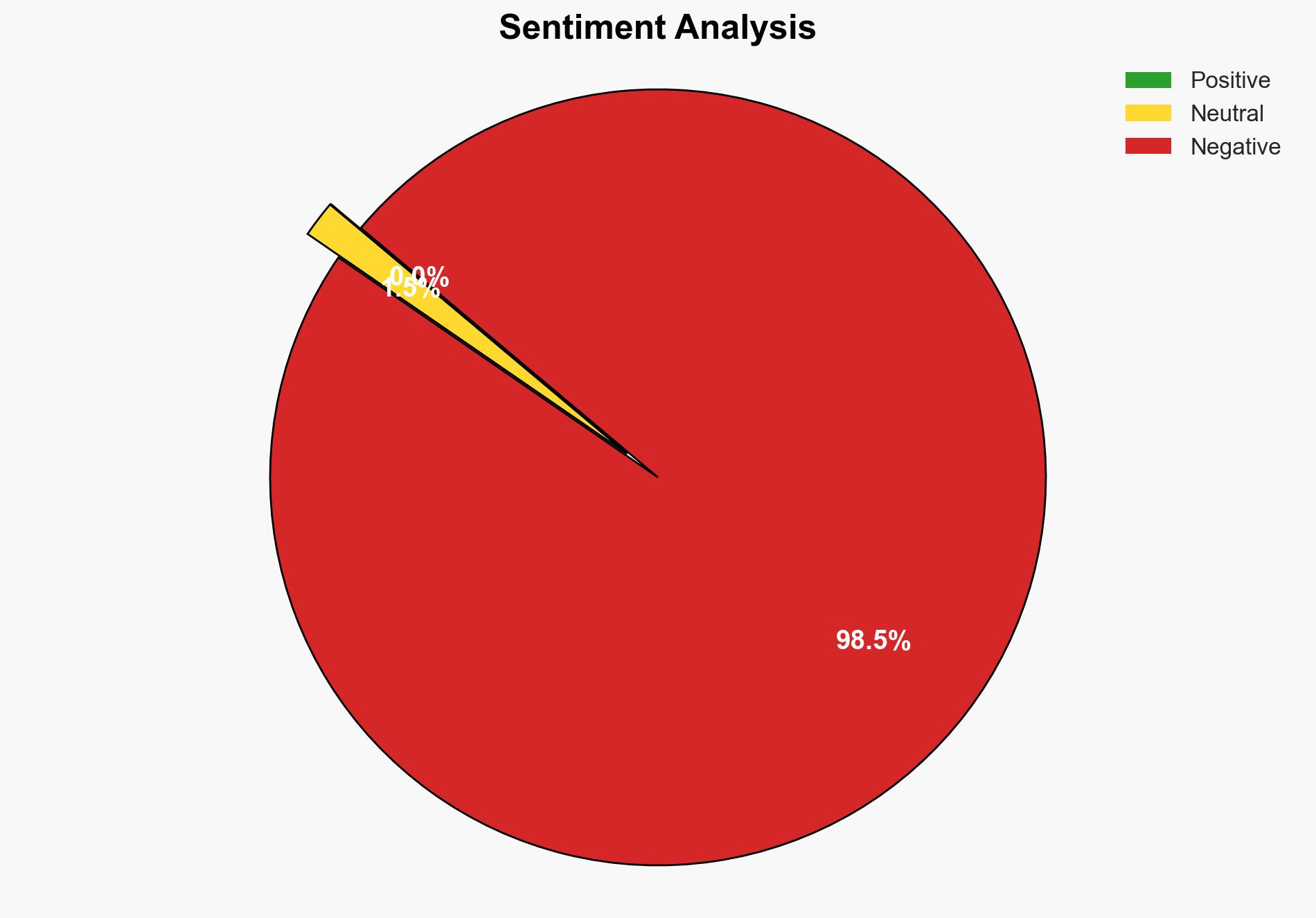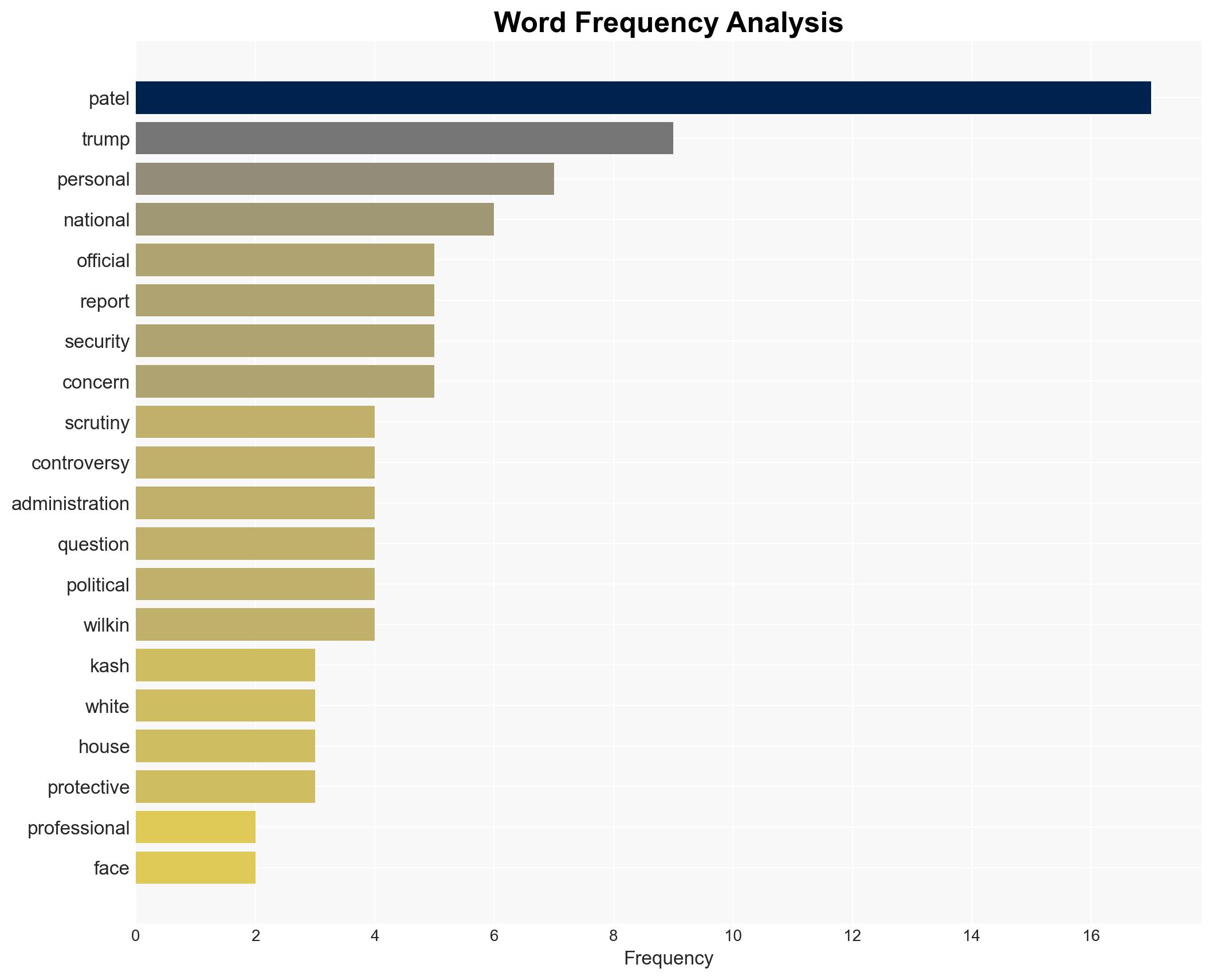Trump’s Discontent with Kash Patel Grows Amid Personal Controversies and National Security Concerns
Published on: 2025-11-26
AI-powered OSINT brief from verified open sources. Automated NLP signal extraction with human verification. See our Methodology and Why WorldWideWatchers.
Intelligence Report:
1. BLUF (Bottom Line Up Front)
There is moderate confidence that internal tensions within Trump’s advisory network, particularly involving Kash Patel, could lead to strategic realignments. The most supported hypothesis is that Trump is considering distancing from Patel due to mounting controversies and potential national security implications. Recommended action includes monitoring shifts in advisory roles and preparing for potential policy changes.
2. Competing Hypotheses
Hypothesis 1: Trump is actively seeking to distance himself from Kash Patel due to the latter’s personal and professional controversies, which are perceived as liabilities to national security and political stability.
Hypothesis 2: The reports of Trump wanting to remove Patel are exaggerated or misinterpreted, possibly as a result of internal power struggles or external misinformation campaigns, with no immediate plans for Patel’s dismissal.
The first hypothesis is more likely due to the accumulation of controversies surrounding Patel and the potential national security risks highlighted by various credible sources. The second hypothesis cannot be entirely dismissed due to the lack of direct evidence of Trump’s intentions and the White House’s official denials.
3. Key Assumptions and Red Flags
Assumptions include the belief that Trump’s decision-making is heavily influenced by public perception and internal advisory dynamics. A red flag is the potential for misinformation or biased reporting, given the politically charged environment. Deception indicators include the White House’s categorical denial of any imminent changes, which could be a strategic move to manage public perception.
4. Implications and Strategic Risks
The primary risk is the potential destabilization of Trump’s advisory network, which could lead to policy inconsistencies and weakened national security oversight. Escalation scenarios include increased scrutiny from intelligence agencies, potential leaks, and a possible shift in Trump’s political alliances. The controversy could also impact FBI morale and operational effectiveness if perceived as politically motivated.
5. Recommendations and Outlook
- Monitor developments within Trump’s advisory network for signs of realignment or policy shifts.
- Prepare for potential changes in national security policy and advisory roles.
- Engage in strategic communication to manage public perception and maintain stability.
- Best-case scenario: The situation stabilizes with no significant impact on national security or political dynamics.
- Worst-case scenario: Internal conflicts lead to significant policy disruptions and weakened national security posture.
- Most-likely scenario: Incremental changes in advisory roles with moderate impact on policy and security.
6. Key Individuals and Entities
Donald Trump, Kash Patel, Alexis Wilkin, Karoline Leavitt
7. Thematic Tags
Structured Analytic Techniques Applied
- Cognitive Bias Stress Test: Expose and correct potential biases in assessments through red-teaming and structured challenge.
- Bayesian Scenario Modeling: Use probabilistic forecasting for conflict trajectories or escalation likelihood.
- Network Influence Mapping: Map influence relationships to assess actor impact.
Explore more:
National Security Threats Briefs ·
Daily Summary ·
Support us





